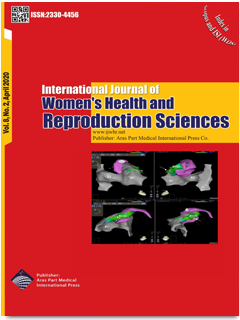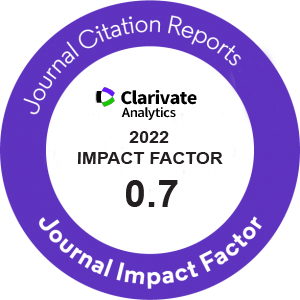| Original Article | |
| A Comparison of 3 Different Controlled Ovarian Stimulation Protocols in Poor Women Responders Chosen According to POSEIDON Criteria: Micro-dose, Standard Flare-up, and Antagonist Protocol | |
| Milal Muhammad Al-Jeborry1, Fadia J Alizzi2, Lubna A Al-Anbari3 | |
| 1Department of Obstetrics, Gynecology, and Infertility, Medical College, University of Babylon, Babylon, Iraq 2Department of Obstetrics, Gynecology, and Infertility, Al Mustansiriyah College of Medicine, Baghdad, Iraq 3High Institute of Infertility Diagnosis and Assisted Reproductive Technologies, Al-Nahrain University, Baghdad, Iraq |
|
|
IJWHR 2020; 8: 147-152 DOI: 10.15296/ijwhr.2020.23 Viewed : 2625 times Downloaded : 2112 times. Keywords : Assisted conception, In vitro fertilization, Ovarian stimulation, Poor ovarian response, POSEIDON criteria |
|
| Full Text(PDF) | Related Articles | |
| Abstract | |
Objectives: To compare the effectiveness and outcomes of pregnancy accomplished by in vitro fertilization between micro-dose and standard flare-up, along with antagonist protocols in the treatment of poor responders using POSEIDON (Patient-Oriented Strategies Encompassing Individualized Oocyte Number) criteria for diagnosis. Materials and Methods: This prospective study included 114 poor responder Iraqi women undergoing intracytoplasmic sperm injection (ICSI) cycles, who were randomly allocated to 3 groups according to the treatment protocol. Micro-dose (n=38), standard flare-up (n=38) and antagonist (n=38) protocols. High dose gonadotrophins (300-450 IU/day) from day 2 of the cycle until the day of human chorionic gonadotropin (hCG) administration were used in the three groups. The primary outcome measure was the number of retrieved mature oocytes and the secondary outcomes included fertilization, implantation, and pregnancy rates (PRs). Results: The estradiol level at the day of hCG trigger was higher in women who received a standard flare-up protocol while there was a higher endometrial thickness in the micro-dose group compared to standard flare-up and antagonist groups (P < 0.05). In addition, non-statistically significantly higher fertilization, implantation, and PRs with less cancellation rates were observed in the micro-dose group. Conclusions: The micro-dose protocol in the poor responder improved pregnancy, fertilization, and implantation rates while reducing the cancellation rate compared to standard flare-up and antagonist protocols although the result represented no statistical significance. |
Cite By, Google Scholar
Online Submission System
 IJWHR ENDNOTE ® Style
IJWHR ENDNOTE ® Style
 Tutorials
Tutorials
 Publication Charge
Women's Reproductive Health Research Center
About Journal
Publication Charge
Women's Reproductive Health Research Center
About Journal
Aras Part Medical International Press Editor-in-Chief
Arash Khaki
Mertihan Kurdoglu Deputy Editor
Zafer Akan























